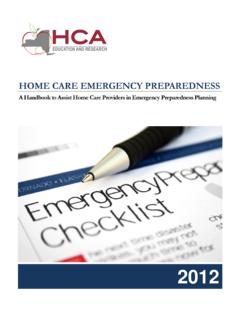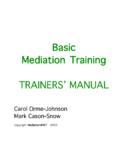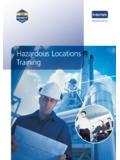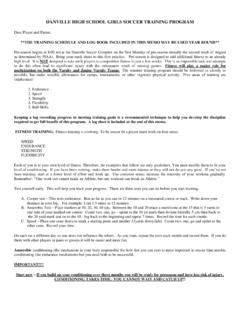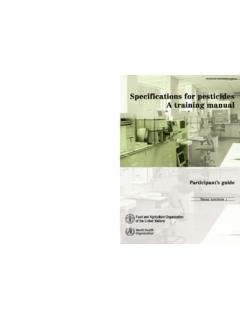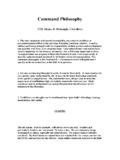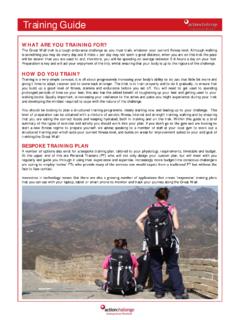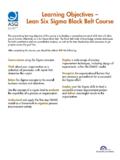Transcription of Guide to Preparedness Evaluation Using Drills and …
1 Guide to Preparedness Evaluation Using Drills and Table Top Exercises Contents SECTION 1. TYPES OF exercise THE exercise SECTION 2. TABLE TOP TABLE TOP exercise TABLE TOP exercise TABLE TOP exercise POST- exercise SECTION 3. drill drill drill POST- exercise APPENDIX A. APPENDIX B. CHECKLIST FOR TABLETOP A. TABLE TOP exercise B. TABLE TOP exercise C. TABLE TOP exercise D. POST- exercise APPENDIX C. CHECKLIST FOR A. drill B. drill C. drill D. POST- exercise Association of State and Territorial Health Officials Winter 2002 1 SECTION 1.
2 INTRODUCTION This document provides information and procedures to assist in the planning and conduct of Drills and table top exercises. It is intended to aid in understanding how Drills and exercises fit into overall emergency Preparedness programs, and how they can be used to develop, maintain, and enhance proficiency in preparing for and responding to emergency situations. This section introduces three types of exercises (operations center exercises, table top exercises, and Drills ), and it defines the three categories of exercise participants (players, controllers, and evaluators).
3 Although operations center exercises are beyond the scope of this handbook, details on the planning, preparation, and execution of table top exercises and Drills are provided in Sections 2 and 3. TYPES OF EXERCISES Operations Center Exercises. These are major exercises that involve the simulated implementation of an organization's emergency plan to deal with a simulated emergency of significant proportions. Operations center exercises are also known as simulations. Operations center exercises often are described in terms that more accurately indicate the nature of the exercise .
4 For example, they may also be called an "emergency response exercise ," a "crisis management exercise ," or a procedural exercise ." Compared to Drills and table top exercises, the planning and development of an operations center exercise is a relatively complex process. Table Top Exercises. These exercises--usually conducted around a conference table--involve the discussion of issues and "what-if ' situations, and the development of response options. Examples of topics include suspected outbreak of a contagious disease or response to a multi-city bioterrorist incident.
5 Section 2 provides additional suggestions on the planning and execution of table top exercises. Drills . These are relatively simple, narrowly-focused, performance-related exercises, such as telephone activation, emergency operations center start-up, and operation of a new information system. Section 3 provides additional suggestions on drill planning and execution. Another, more complex type of exercise that stresses a "hands-on," performance-oriented approach is the field training exercise . Such exercises involve the actual deployment of people and equipment to the site of a simulated disaster.
6 Since these exercises may require the construction of fairly elaborate mock ups or the use of actual facilities, they can be very expensive and time consuming. exercise PARTICIPANTS There are three categories of exercise participants: players, controllers, and evaluators. These terms are discussed in greater detail in Sections 2 and 3 and Appendix 1. Players. These are employees who respond to the simulated emergency and attempt to solve the simulated problems portrayed in the scenario. Players usually perform the same duties they would be assigned during a real emergency.
7 Controllers. These are employees who observe the players during the "play" of the exercise and ensure they stay properly focused on the assigned tasks. An exercise Director may be designated, and if multiple locations are involved a Senior Controller may be appointed for each site. The exercise Director is empowered to stop exercise play or instruct the players to redirect their activities if it appears they are not following prescribed plans, policies, procedures, or practices. For table top exercises, the title of "facilitator" is used, rather than "controller.
8 " Evaluators. The Evaluation of exercises involves the collection of information on activities during the exercise play, for immediate or later assessment. The principal focus of exercise Evaluation is to determine the adequacy of policies, plans, procedures, and practices not individual performance. Often, controllers can do "double duty" and also serve as evaluators. Association of State and Territorial Health Officials Winter 2002 2 THE exercise CYCLE Although the three types of exercises listed earlier are conducted quite differently, each involves a similar process of planning, preparation, execution, and post exercise activities.
9 The main difference is in the level of effort, which will vary from "high" for operations center exercises, to "medium" for table top exercises, to "low" for Drills . Even for Drills and table top exercises, however, the exercise planner should think through each stage of the exercise cycle to determine the extent of its applicability, then act accordingly. The planning activities can be accomplished concurrently or in almost any sequence, provided the planning starts with the establishment of the concept and objectives. The preparation activities usually can be accomplished in parallel with some of the planning activities.
10 The execution and post- exercise activities, of course, are sequential, with the latter leading to the planning for the next exercise . Each of the items in the following outline is addressed in Sections 2 and 3, to show how they pertain to table top exercises and Drills , respectively. exercise Planning Activities ! Concept and Objectives ! Scenario ! exercise Control ! Response Cell ! exercise Evaluation exercise Plan exercise Preparation Activities ! exercise Materials ! Player Training and Orientation ! Facilitator Orientation ! Evaluator Orientation !
